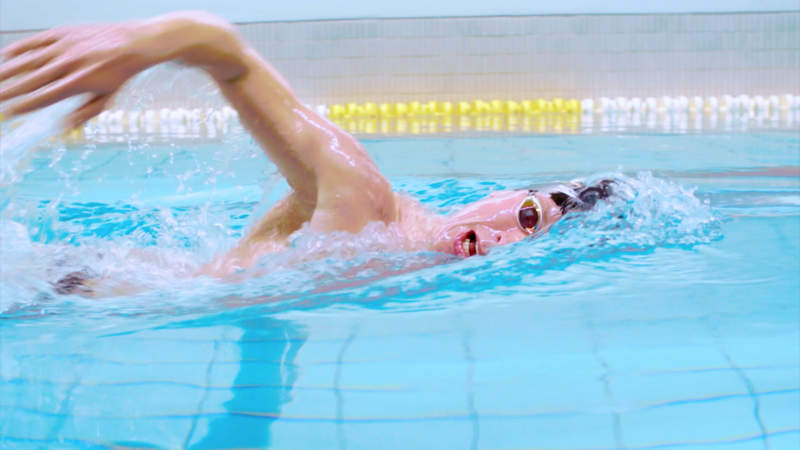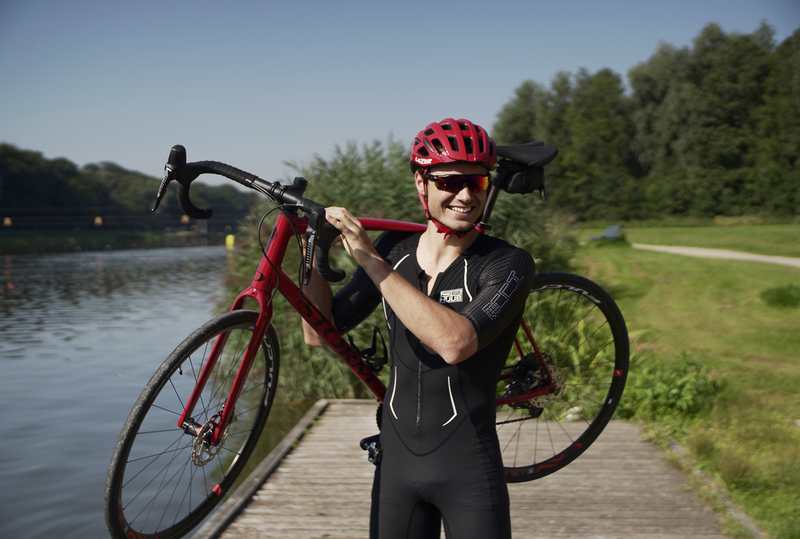Swimming blog - TRIATHLON 3 reasons why swimming is the triathlon bottleneck & how to change that
The start of a triathlon can be a very nerve-wracking thing. Especially because your triathlon starts with swimming. For beginning and intermediate triathletes, swimming can be seen as the bottleneck, something to survive rather than enjoy. We explain how this bottleneck exists and strategies to make the swimming leg a good start to your triathlon day.
1.We don’t breathe often enough
You need to breathe more often. What coaches advise and what is desirable in training is breathing bilaterally. Watch our breathing bilateral tutorial here. But that is not good enough in a race. Here you need as much oxygen as possible to deliver a good and comfortable swim. This means you need to be able to switch your breathing to every second stroke or unilaterally if you need more air. Taking in more oxygen will help relieve nerves as well.
To put it into context, a cyclist or runner will breathe on average 60 times per minute. If you are swimming a race with a stroke rate of 60 strokes per minute and breathing bilaterally (every 3rd stroke), you will only breathe 20 times per minute. This is 40 times less than while running or cycling! This is not enough in our estimation and experience. If your stroke rate is lower, then the number of times we breathe also goes down. This is why you might need to alternate breathing bilateral to breathing unilateral. Being able to breathe to both sides is a huge plus in open water. Imagine the waves are coming to your favourite side and you can’t breathe because of that. Then you need to switch it up and breathe to the other side.
So, the question here is, do you breathe enough? Is your stroke rate and breathing pattern helping or hindering your swimming? Learning how to breathe and how to breathe bilaterally is a great start to swimming smarter and quicker. Watch our Breathing tutorial here.

2. Triathletes don’t train like swimmers
Triathletes don’t train like swimmers. They spend less hours in the pool, less time on technique and shy away from any stroke that is not freestyle. This is the second bottleneck. Running and cycling are seen as more important to the training regime and less hours are spent on swimming.
There are a couple questions you should ask yourself to fix this problem. Firstly, am I swimming enough? In our experience 3 times a week is a minimum. Secondly, am I including technique sets regularly in my swim sessions? The answer should be yes. Technique is the basis of your swimming and should be worked on in every swim session. Finally, am I swimming different strokes, distances and intensities on a regular basis? You should be switching up your training instead of just counting laps at an easy pace.
If the answer to all these questions is no, our training plans at SwimGym.com can fix this. We have brought together our knowledge of how the best swimmers train and created plans that will bring these three elements into your training together, without you having to think about it.

3. Technique is king
Triathletes don’t spend a lot of time on technique. There is no truth in the argument that because open water is different, one doesn’t have to learn the technique. The greatest open water swimmers of our time did the hard work of learning the technique like pro’s in a swimming pool. A good foundation is paramount.
The technical aspect of swimming might make it difficult to know where to start. You start by doing drills and lots of them. Doing drills will help you gain more control over your body coordination in the water and therefore give you control over your technique. At SwimGym.com we have over 100 instruction video’s how to execute and practice drills based on different swimming skills, such as body positioning, kicking or the pull-through.
At SwimGym.com you will also find a virtual coach who can analyse your stroke for you and give you the best starting point and where to focus next. We call this the SwimGym Analyser, and this is a great place to start if you want to know on what aspects of your technique you should be working on.

On race day the only bottle you want to be worried about is the Bluebottle Jellyfish. Remove the bottleneck in your swimming and see your enjoyment and results take a leap forward.